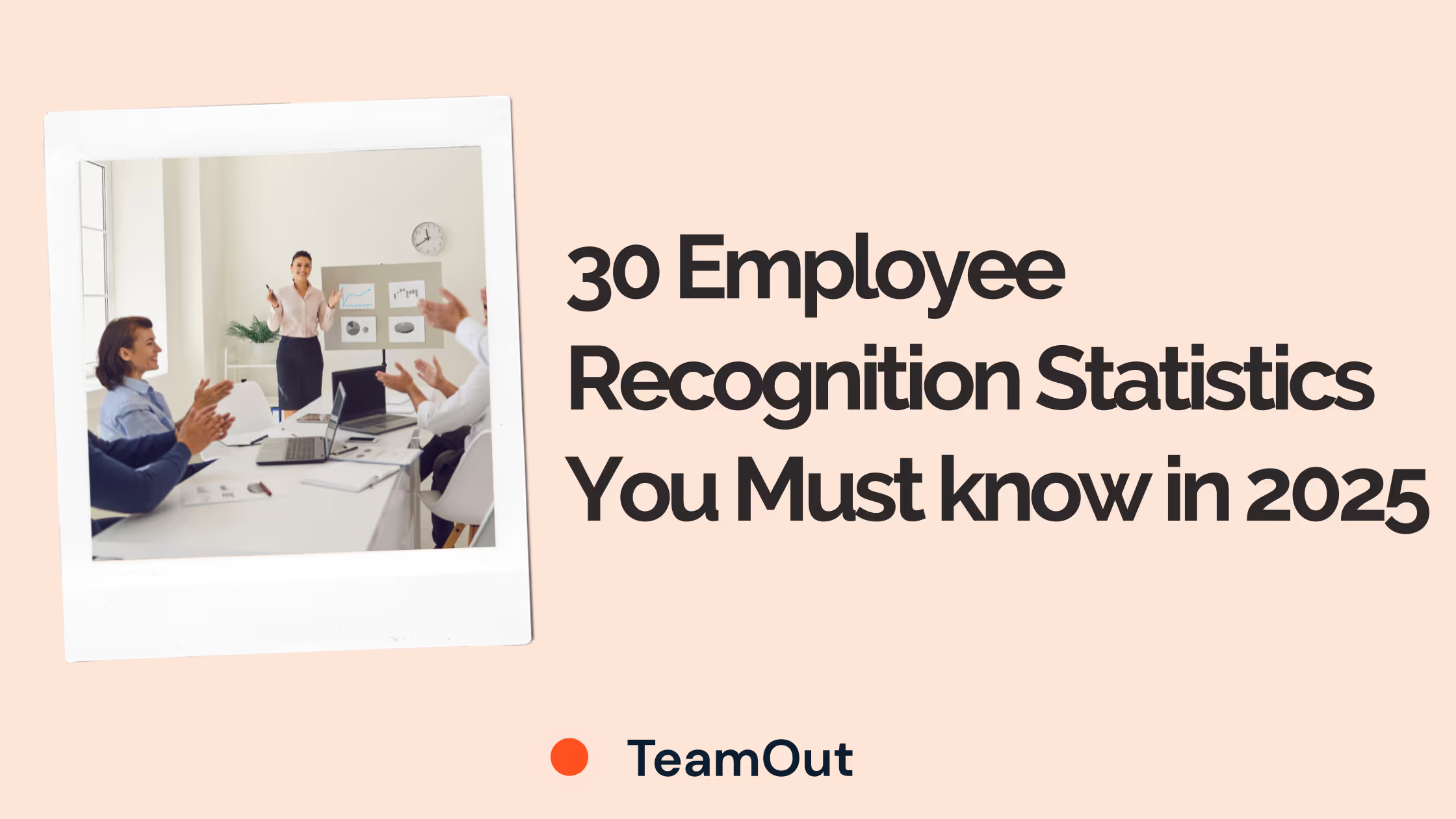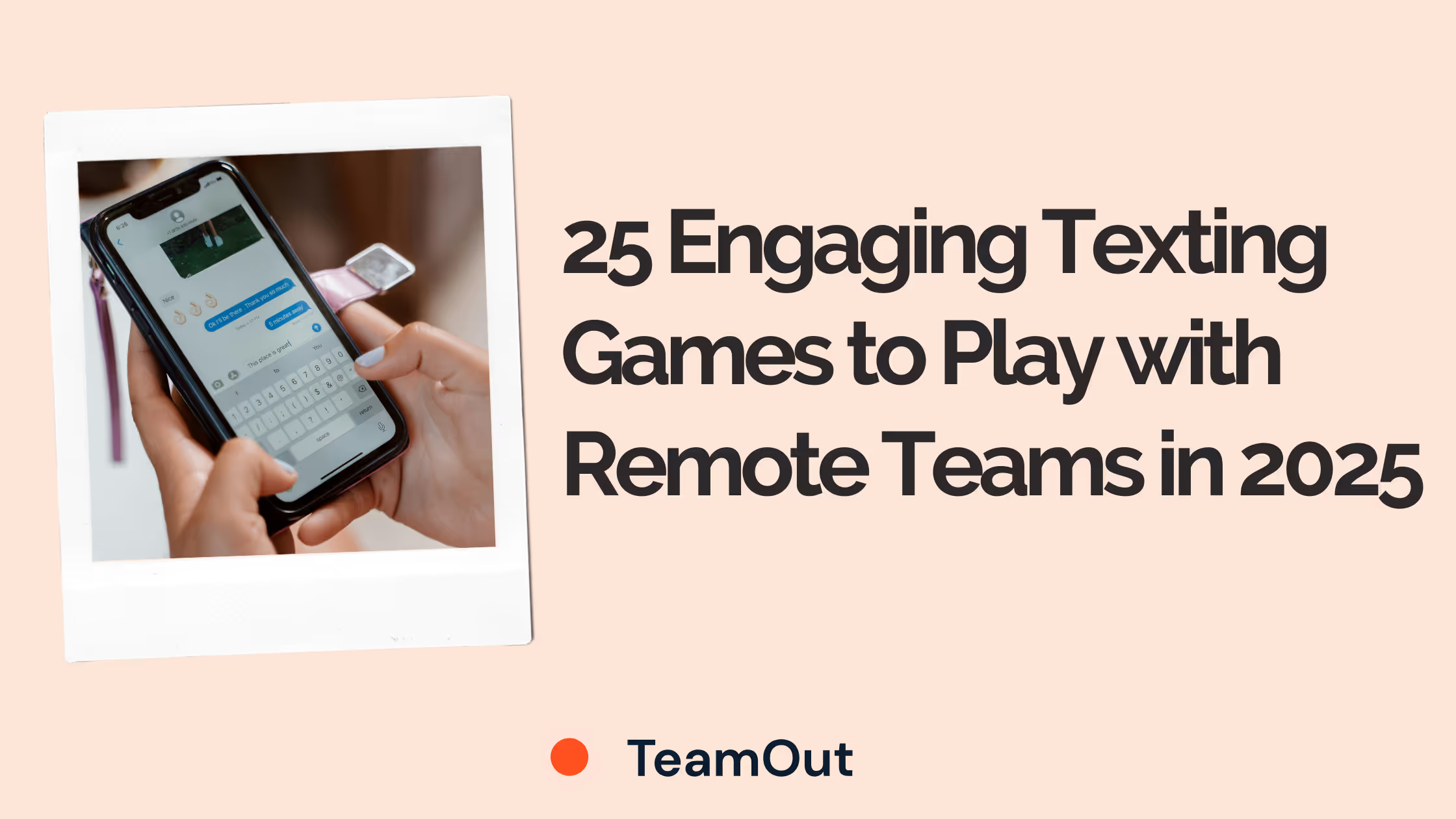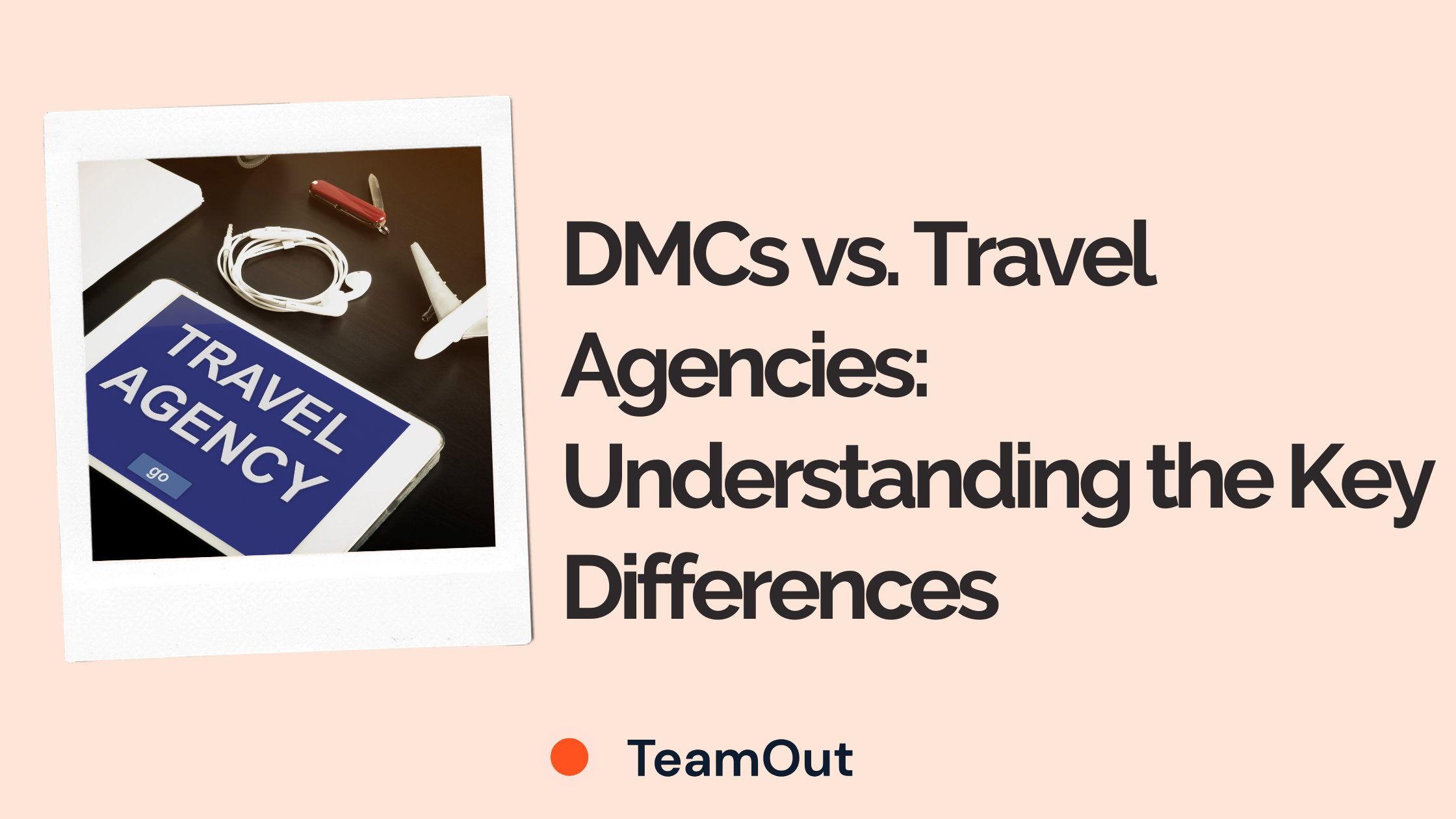1. 79% of Employees Who Quit Their Jobs Claim that a Lack of Appreciation Was a Major Reason for Leaving.
(Research by OC Tanner, published by NBC News)
A significant majority of employees cite feeling unappreciated as a key factor behind their decision to leave, highlighting how critical employee recognition is in reducing employee turnover.
Why This Matters: When employees do not feel valued, voluntary turnover increases, causing costly disruptions and harming company culture.
TeamOut Advice: Prioritize building a consistent employee recognition program that emphasizes frequent, sincere appreciation. Train managers to recognize small wins regularly to help employees feel valued and reduce turnover.
2. Adopting a Recognition Program that Congratulates Employees on Their Work Anniversaries Can Increase the Tenure at an Organization by 2 Years.
(Research by OC Tanner)
Recognition tied to career milestones, such as work anniversaries, directly increases employee retention by extending employee tenure.
Why This Matters: Simple recognition programs that celebrate milestones strengthen the employee experience and contribute to longer retention.
TeamOut Advice: Implement automated anniversary recognition within your employee recognition program. Combine this with personalized messages from managers to make milestone recognition meaningful, supporting career growth and engagement.
3. A Survey by WorldatWork Found that 85% of Companies with Recognition Programs saw a Positive Impact on Employee Engagement.
(Research by WorldatWork Trends in Employee Recognition)
The vast majority of companies report improved engagement after launching recognition programs, demonstrating employee recognition’s crucial role in boosting workplace motivation and satisfaction.
Why This Matters: Employee engagement is closely linked to business success and retention; recognition programs are proven to drive higher engagement.
TeamOut Advice: Develop recognition programs aligned with your company values that include public acknowledgment, peer-to-peer recognition, and rewards. Collect employee feedback regularly to ensure the program stays relevant and effective.
4. Gallup's Data Shows That Well-Recognized Employees Are 45% Less Likely to Have Turned Over After Two Years.
(Research by Gallup)
Effective and personalized recognition is one of the most powerful tools to improve employee retention statistics and lower turnover.
Why This Matters: Consistently recognized employees feel valued, increasing their commitment to the organization and lowering intent to quit.
TeamOut Advice: Implement a structured recognition program, not just for annual awards but for real-time accomplishments. Equip managers with the tools and language to provide genuine feedback in public and private settings. Make recognition part of everyday practice, not a quarterly afterthought.
5. Employees Who Feel Valued are 63% Less Likely to Be Looking for a New Job.
(Research by Gallup)
Feeling valued is a powerful driver of employee retention and job satisfaction, directly reducing turnover rates and improving employee engagement.
Why This Matters: Employee retention improves significantly when organizations foster recognition and provide regular, honest feedback to employees.
TeamOut Insight: Managers play a crucial role in making employees feel appreciated, which can decrease quit rates and increase overall retention metrics.
6. Employees Who Feel They Receive Authentic Recognition Are Four Times More Likely to Believe in Equal Access to Top Roles and Six Times More Likely to Trust Leaders’ Fairness Compared to Those Who Don’t.
(Research by Gallup)
Authentic recognition builds trust in leadership and fairness, which are essential for a healthy company culture and employee retention.
Why This Matters: Employees who trust their organization and believe in equal opportunities stay engaged and committed.
TeamOut Advice: Train managers and senior leaders on giving authentic, personalized recognition tied to company values. Encourage transparency and fairness in development opportunities to reinforce trust across the organization.
7. According to a 2024 Reward Gateway Report, 78% of Employees Feel More Motivated when Their Manager Recognises Them for Their Good Work.
(Research by Reward Gateway Report)
Manager recognition is a powerful driver of employee motivation, which improves performance and job satisfaction.
Why This Matters: Recognition from direct managers impacts employees’ daily experience and willingness to put in extra effort.
TeamOut Advice: Equip managers with straightforward tools and training for frequent, specific recognition, both public and private. Make recognition a regular agenda item in team meetings and one-on-one check-ins.
8. O.C. Tanner Reports that 37% of Employees say They Have Never Received Recognition from Their Employer.
(Research by OC Tanner)
A large portion of employees report not receiving any recognition, revealing a critical gap in many organizations’ employee experience strategies.
Why This Matters: Lack of recognition damages employee motivation and increases the risk of turnover and disengagement.
TeamOut Advice: Audit your current recognition efforts to identify gaps. Launch simple recognition initiatives immediately, such as weekly shout-outs, peer nominations, or instant praise platforms, to ensure no employee feels overlooked.
9. Employees Who Strongly Agree They Receive Authentic Recognition are Also Four Times More Likely to Strongly Agree They are Paid Fairly Compared to Those Who Don’t Feel They Get Authentic Recognition.
(Research by Gallup)
Authentic recognition influences how employees perceive fairness in compensation and fairness is tightly linked to employee satisfaction and retention.
Why This Matters: When employees feel genuinely appreciated, they are more likely to perceive fair treatment overall, increasing their loyalty and lowering voluntary turnover.
TeamOut Advice: Incorporate authentic recognition into your employee recognition program by training managers to give personalized, specific praise tied to real contributions. Ensure recognition occurs regularly and highlights the connection between employees’ efforts and fair rewards.
10. Employees Who Do Not Feel Adequately Recognized Are Twice as Likely to Say They'll Quit in the Next Year.
(Research by Gallup)
Lack of sufficient recognition doubles the risk that employees will consider leaving their organization within a year, directly impacting turnover rates.
Why This Matters: Inadequate recognition is a key driver of employee turnover and threatens organizational success by increasing retention challenges.
TeamOut Advice: Set measurable goals to increase how often employees receive recognition, aim for monthly or weekly feedback. Empower managers with easy-to-use recognition tools and scripts to ensure no employee feels overlooked.
11. Organizations Whose Leaders Publicly Recognize Employees for Healthy Actions and Outcomes Reported Higher Employee Satisfaction Rates at 85%.
(Research by Mercer)
Public recognition from leadership, especially for positive behaviors like healthy habits or achievements, boosts employee satisfaction and reinforces company values.
Why This Matters: Visible recognition by senior leaders enhances the overall work environment and motivates other team members to follow suit, improving employee engagement.
TeamOut Advice: Encourage senior leaders to consistently recognize employees during company meetings or communications. Develop a calendar for public recognition tied to health, performance, and culture milestones to build an ideal company culture.
12. Employees Who Strongly Agree They Get Authentic Recognition Are Six Times as Likely to Know What Their Manager Thinks of Their Performance.
(Research by Gallup)
Authentic recognition strengthens the feedback loop, helping employees clearly understand their performance and expectations.
Why This Matters: Clear, meaningful feedback reduces uncertainty, helps employees improve, and increases job satisfaction and retention.
TeamOut Advice: Train managers to integrate authentic recognition into performance discussions. Use real-time recognition tools combined with monthly check-ins focused on strengths and growth to empower employees.
13. According to Gallup's Analysis, Only One in Three Workers in the U.S. Strongly Agree that They Received Recognition or Praise for Doing Good Work in the Past Seven Days.
(Research by Gallup)
Recognition remains infrequent for many employees, indicating a widespread missed opportunity to improve employee experience and engagement.
Why This Matters: Low recognition frequency correlates with lower job satisfaction and higher employee turnover.
TeamOut Advice: Implement recognized best practices such as daily or weekly recognition moments. Use digital platforms to facilitate quick, consistent recognition among managers and peers to boost recognition culture.
14. 59% of Employees and 66% of Managers Will Leave Their Jobs for Companies that Promote Well-Being and Recognition.
(Research by Deloitte)
Employee recognition combined with well-being initiatives strongly influences career decisions, especially among managers.
Why This Matters: Prioritizing employee recognition alongside well-being reduces turnover and attracts talent aligned with organizational values.
TeamOut Advice: Remember that wellness is one of the corporate trends for 2025. Integrate employee recognition programs with wellness retreats and initiatives. Promote these combined offerings in recruiting and retention strategies to increase employee satisfaction and reduce voluntary turnover.
15. Employees Who Strongly Agree that They Get Authentic Recognition Are Four Times as Likely to Feel Connected to Their Organization’s Culture.
(Research by Gallup)
Authentic recognition deepens cultural alignment by making employees feel valued within the company’s mission and values.
Why This Matters: Strong culture connection improves engagement, retention, and overall organizational success.
TeamOut Advice: Design recognition programs explicitly tied to your company’s mission and values. Use recognition examples that reinforce those values to help employees feel part of the bigger picture consistently.
16. Employees Who Strongly Agree that Their Recognition is Authentic Are Five Times More Likely to Believe Their Organization Acts Ethically and With Integrity Compared to Those Who Don’t.
(Research by Gallup)
Authentic recognition builds trust in an organization’s ethics and integrity, a key component of employee engagement and company success.
Why This Matters: When employees perceive ethical behavior, they feel valued and motivated, which strengthens organizational culture and reduces voluntary turnover.
TeamOut Advice: Train managers and senior leaders to deliver genuine, values-based recognition consistently. Incorporate ethics and integrity messaging into recognition programs to reinforce these behaviors across teams.
17. 24% of Workers Say the Most Memorable Recognition They Receive Comes from the CEO.
(Research by Gallup)
Recognition from top leadership creates a lasting impact and contributes to employee motivation and appreciation.
Why This Matters: Memorable recognition from senior leaders highlights company values and empowers employees, reinforcing a positive work environment.
TeamOut Advice: Encourage CEOs and senior leaders to regularly participate in recognition events or communications. Use personalized, public recognition examples to make these moments meaningful and inspire others.
18. 28% of Employees State that The Most Relevant Recognition They Receive Comes From Their Manager.
(Research by Gallup)
Direct managers are critical sources of meaningful recognition that directly influence employee satisfaction and performance.
Why This Matters: Manager recognition drives daily employee engagement, motivation, and retention more than any other source.
TeamOut Advice: Equip managers with tools and training to recognize employees frequently and authentically. Integrate recognition into routine feedback and one-on-one meetings to make employees feel consistently appreciated.
19. Only 8% of Employees Who Contend With Insincere Recognition (Do Not Agree They Get Authentic Recognition) Can Still Strongly Agree that They Are Treated With Respect at Work.
(Research by Gallup)
Insincere or superficial recognition damages employee trust and the perception of respect, negatively affecting engagement and retention.
Why This Matters: Authenticity in recognition is essential; employees need to feel that appreciation is genuine to feel valued and motivated.
TeamOut Advice: Audit recognition practices to eliminate scripted or automatic praise. Promote authentic recognition by sharing specific employee contributions and encouraging peer-to-peer acknowledgment.
20. Employees Who Strongly Agree that the Recognition They Receive is Authentic Are Seven Times as Likely to Report that They Are Treated With Respect at Work.
(Research by Gallup)
Authentic recognition is closely linked to employees' feelings of respect, which improves workplace culture and business outcomes.
Why This Matters: Respectful work environments foster higher job satisfaction, better employee retention, and greater productivity.
TeamOut Advice: Prioritize authentic, timely recognition embedded in daily interactions. Train all levels of leadership to recognize employees in ways that reinforce respect and appreciation consistently.
21. HR leaders 43% of HR Leaders Say They're Ensuring Competitive Salary and Benefits, as well as Recognition Programs (38%), to Enhance Retention.
(Research by Forbes)
Among surveyed HR leaders, 43% focus on maintaining competitive salaries and benefits, while 38% invest in recognition programs to improve employee retention and reduce turnover.
Why This Matters: Compensation is a baseline expectation, but recognition and appreciation are what often tip the scales between employees staying or becoming a turnover statistic.
TeamOut Advice: If you’re not already regularly benchmarking pay or offering real, public recognition, start immediately. Implement a formal employee recognition program with clear criteria, and ensure salary/benefit reviews are routine and transparent.
22. Employees Receiving High-Quality, Strategic Recognition Are 65% Less Likely to be Job Hunting than Those with Lower-Quality Recognition.
(Research by Gallup)
Employee recognition statistics show that when recognition is frequent, authentic, and strategic—fulfilling core pillars—employees are significantly less likely to actively seek a new job. High-quality employee recognition directly boosts retention and job security.
Why This Matters: Effective recognition programs lower voluntary turnover, saving companies the cost and disruption of recruiting and training replacements.
TeamOut Advice: Audit your employee recognition program to ensure it meets at least four out of five strategic pillars (timeliness, specificity, alignment with company values, tailored delivery, and impact on employee performance). Equip managers with real employee recognition examples and templates, and review recognition statistics quarterly to identify areas for improvement.
23. In 2022, only 19% of Senior Leaders and Managers said Employee Recognition was a Major Strategic Priority at Their Organization.
(Research by Gallup)
Most companies underprioritize employee recognition and end up missing a key driver of employee engagement and organizational performance. Low focus at the top means recognition programs lack investment and influence.
Why This Matters: When senior leaders and hr professionals do not prioritize recognition, most employees feel undervalued, leading to weaker employee appreciation and business outcomes.
TeamOut Advice: Secure buy-in from senior leaders by sharing current employee recognition statistics and the ROI of effective recognition programs. Include recognition metrics in performance reviews at all leadership levels.
24. Compared to 2022, in 2024, Senior Leaders were 50% More Likely to Strongly Agree With the Value of Recognition: 42% vs. 28% in 2022.
(Research by Gallup)
These recognition statistics reveal a cultural shift: more senior leaders now recognize the link between successful employee recognition programs and business success.
Why This Matters: Senior leadership support results in more resources devoted to rewarding employees, increasing the impact of recognition on employee engagement and company culture.
TeamOut Advice: Leverage this growing support by piloting monthly recognition initiatives company-wide. Use positive feedback from these programs to keep leaders invested and show how much recognition is valued by team members.
25. Just 22% of Employees Say They Get the Right Amount of Recognition for the Work They Do, Unchanged From 2022.
(Research by Gallup)
Most employees do not feel they receive enough recognition, which negatively impacts morale and employee motivation.
Why This Matters: Insufficient employee appreciation causes lower engagement, higher turnover risk, and reduced employee performance.
TeamOut Advice: Set clear goals for how much recognition employees receive (e.g., each team member should receive at least one memorable recognition per month from their manager). Use recognition statistics from employee surveys to track progress and calibrate your approach.
26. 55% of U.S. Employees Either Do Not Receive Recognition at all or Do Not Receive Recognition that Satisfies Any of the Five Pillars of Strategic Recognition.
(Research by Gallup)
The majority of employees who are recognized do not receive recognition that meaningfully motivates them, indicating a major gap in most organizations’ employee recognition programs.
Why This Matters: Lack of effective recognition programs makes it harder for employees to feel appreciated, leading to reduced employee engagement and higher voluntary turnover.
TeamOut Advice: Immediately introduce training for all managers and HR professionals on the five pillars of strategic recognition. Launch a digital platform to enable regular, peer-to-peer, and manager recognition invariably, so most employees feel valued and appreciated.
27. Employees Whose Recognition Meets at Least Four Pillars Are Nine Times More Likely to be Engaged than Those Whose Recognition Meets None.
(Research by Gallup)
Employee engagement skyrockets when employees receive recognition that addresses multiple core dimensions of meaningful recognition.
Why This Matters: Highly engaged employees consistently contribute to business success with better performance and retention.
TeamOut Advice: Evaluate your recognition programs for coverage of all five pillars. Share practical employee recognition examples to ensure all managers implement specific, timely, values-driven, impactful, and tailored feedback. Monitor engagement levels and adjust your program until you see measurable improvement.
28. Employees Whose Recognition Meets Even One Pillar of Recognition Are 2.9 Times More Likely to be Engaged than Those Whose Recognition Meets None.
(Research by Gallup)
Even a single aspect of authentic recognition, such as frequency or specificity, can nearly triple employee engagement compared to no recognition at all.
Why This Matters: Small steps in rewarding employees go a long way toward increasing productivity and employee satisfaction.
TeamOut Advice: Don’t wait for complex systems and start by encouraging managers and team members to share positive feedback or small, public acknowledgments. Even limited improvements in meaningful recognition have a strong impact on how employees feel and perform.
29. According to Gallup Analytics, only 14% of Employees Strongly Agree that the Performance Reviews They Receive Inspire Them to Improve.
Performance reviews often fail to deliver the most meaningful recognition or motivation employees need to grow, limiting their impact on employee engagement and performance improvement.
Why This Matters: When performance feedback doesn’t inspire, employees may feel undervalued and less motivated, negatively affecting employee recognition statistics and overall work outcomes.
TeamOut Advice: Transform performance reviews into constructive, recognition-rich conversations by training managers to highlight strengths, consistently provide positive feedback, and set motivating goals. Incorporate frequent recognition throughout the year to complement formal reviews and make employees feel truly appreciated.
30. Only 40% of Employees Strongly Agree that Their Manager Holds Them Accountable for Performance Goals, according to Gallup.
Accountability from an employee’s manager is a key part of recognition programs and employee engagement, but most employees report it is lacking.
Why This Matters: Without clear accountability and recognition tied to performance goals, employees may feel overlooked and underappreciated, reducing motivation and impacting retention.
TeamOut Advice: Encourage managers to consistently hold employees accountable while simultaneously recognizing effort and achievements. Use regular check-ins and frequent recognition as tools to balance accountability with appreciation, helping employees feel valued and motivated to succeed.
What Are the Implications of Strong Employee Recognition Programs?
Successful employee recognition programs directly influence employee engagement, motivation, and business performance. Prioritizing authentic, frequent, and meaningful recognition aligned with company values empowers employees and elevates workplace culture.
Wrapping Up
Employee recognition programs are essential for a thriving workplace and have a direct impact on employee engagement, motivation, and business success.
Why does this matter? Because well-executed recognition programs also reduce voluntary turnover and contribute to a stronger company culture and improved performance. Recognition helps retain talent and drive lasting organizational success in 2025 and in years to come.
At TeamOut, we have supported organizations like yours in strengthening team engagement and retention through over 1,000 tailored events and corporate retreats. We partnered with over 4,000 venues, helping you save up to 30 hours searching for the one that suits your team's needs. With a satisfaction rate of 95% from previous clients, our tailored team-building solutions focus on enhancing workplace culture, fostering communication, and addressing turnover challenges, helping you create an environment where every employee feels genuinely inspired to excel.
It's time to transform your employee recognition strategy and unlock the full potential of your workforce. Book a free call with us today to discover customized approaches that make recognition meaningful and impactful for your team!

















.webp)


